Paleozoic Era
The Paleozoic Era is a geologic era that lasted from about 541 to 252 million years ago. It is often referred to as the "Age of Invertebrates" as it saw the emergence and dominance of many new forms of life, particularly invertebrates such as trilobites, brachiopods, and early fish.
Periods of the Paleozoic Era
The Paleozoic Era is divided into six periods:
- Cambrian Period: Often referred to as the "Cambrian Explosion" due to the rapid diversification of life forms.
- Ordovician Period: Characterized by a diverse marine fauna and the colonization of land by plants and arthropods.
- Silurian Period: Marked by the first appearances of vascular plants and the development of terrestrial ecosystems.
- Devonian Period: Known as the "Age of Fishes" due to the diversification of fish species, and also saw the first forests and tetrapods emerge.
- Carboniferous Period: Notable for the formation of extensive coal swamps and the evolution of early amphibians and reptiles.
- Permian Period: Witnessed the diversification of reptiles and the formation of the supercontinent Pangaea.
Key Events and Developments
During the Paleozoic Era, several key events and developments took place:
- Diversification of Life: The emergence and rapid diversification of marine invertebrates, fish, plants, and early terrestrial animals.
- Continental Drift: The movement of landmasses and the eventual formation of the supercontinent Pangaea.
- Climate Changes: Fluctuations in climate, including periods of glaciation and warmer interglacial periods.
- Mass Extinctions: The end of the Paleozoic Era was marked by the Permian-Triassic extinction event, which led to the loss of approximately 90% of marine species.
Study Guide
Here are some key points to focus on when studying the Paleozoic Era:
- Identify and understand the major periods of the Paleozoic Era.
- Explore the key developments in the evolution of life during this era, including the emergence of new species and ecosystems.
- Examine the geological and climatic changes that occurred during the Paleozoic Era and their impacts on life on Earth.
- Investigate the causes and consequences of mass extinctions, particularly the Permian-Triassic extinction event.
- Consider the significance of the Paleozoic Era in shaping the subsequent geological and biological history of the Earth.
[Paleozoic] Related Worksheets and Study Guides:
.◂Science Worksheets and Study Guides Sixth Grade. Introduction to earth science
Study Guide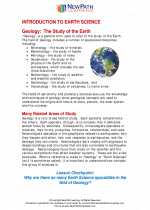 Introduction to earth science
Introduction to earth science  Activity Lesson
Activity Lesson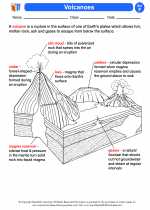 Volcanoes
Volcanoes  Worksheet/Answer key
Worksheet/Answer key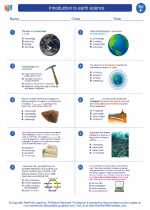 Introduction to earth science
Introduction to earth science  Worksheet/Answer key
Worksheet/Answer key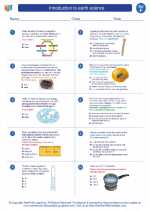 Introduction to earth science
Introduction to earth science  Worksheet/Answer key
Worksheet/Answer key Introduction to earth science
Introduction to earth science  Vocabulary/Answer key
Vocabulary/Answer key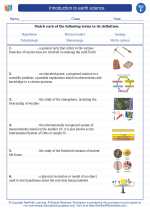 Introduction to earth science
Introduction to earth science  Vocabulary/Answer key
Vocabulary/Answer key Introduction to earth science
Introduction to earth science 

 Activity Lesson
Activity Lesson
 Worksheet/Answer key
Worksheet/Answer key
 Worksheet/Answer key
Worksheet/Answer key
 Worksheet/Answer key
Worksheet/Answer key
 Vocabulary/Answer key
Vocabulary/Answer key
 Vocabulary/Answer key
Vocabulary/Answer key

The resources above cover the following skills:
EARTH AND SPACE SCIENCE